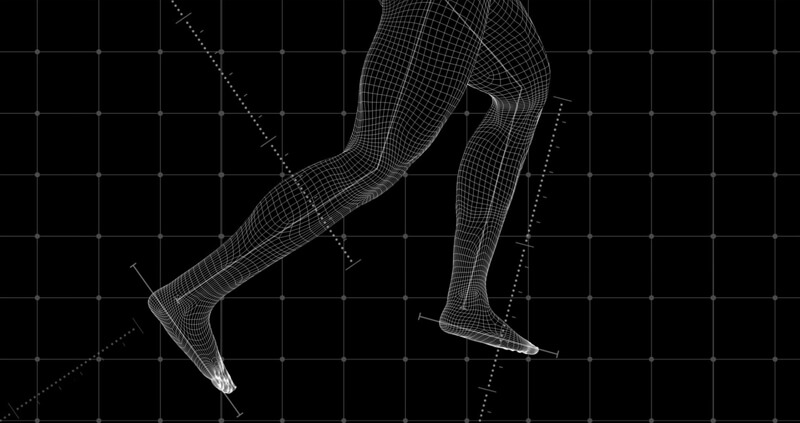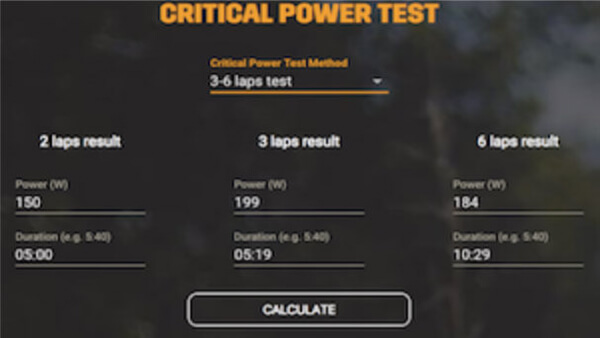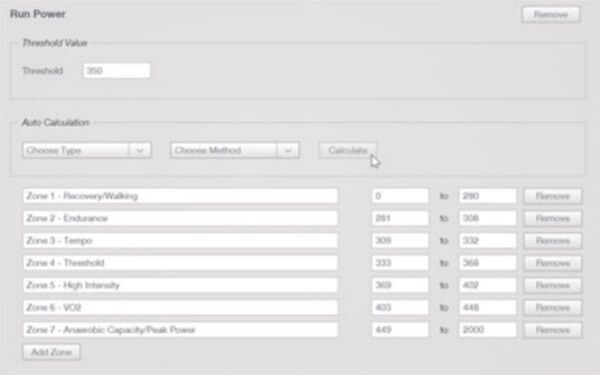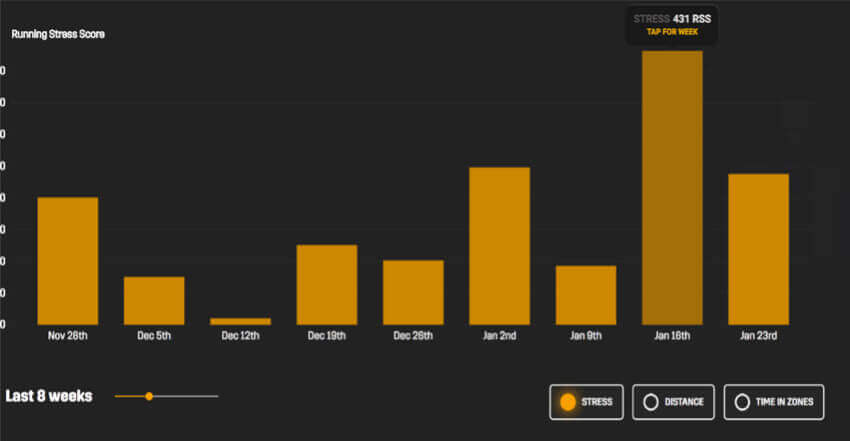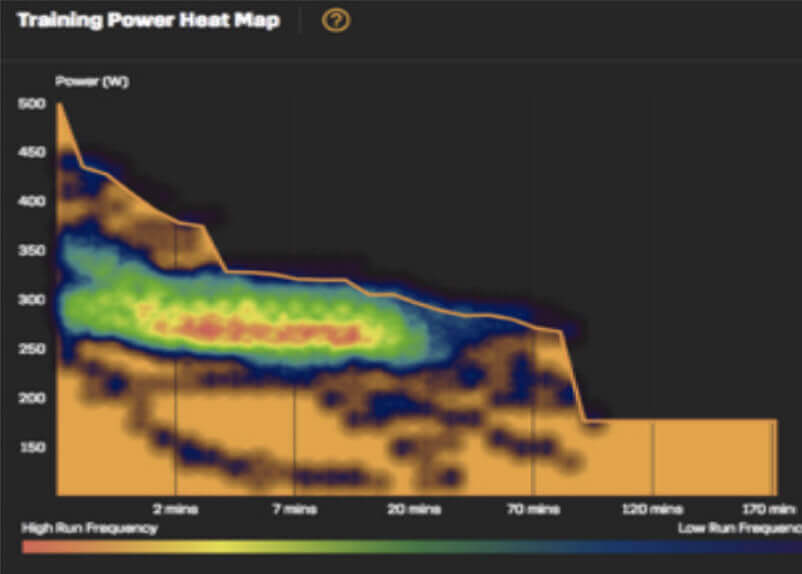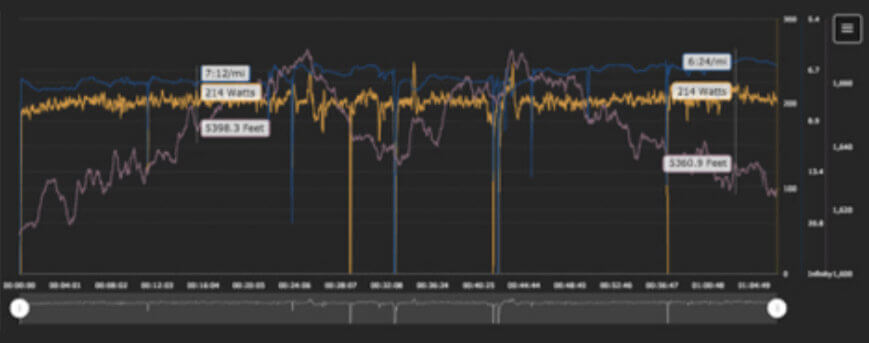Introduction
Congratulations! You are now part of the special group of coaches and athletes who have decided to invest in their running potential, training and competing with the most accurate measure of their bodily performance, power. Potentiometers in general and Stryd in particular provide a historic and revolutionary advance in racing.
This manual will get you started training and racing with a power meter.
By gathering information from what we’ve considered to be the most important articles on power training, our goal is to provide you with an introduction to the basics of power training, in an hour or less (depending on how fast you can read)!
About Stryd
Stryd is the most advanced technology for runners.
Stryd currently provides the following metrics:
- Power.
- Form Power.
- Elevation.
- Cadence.
- Ground contact time.
- Vertical oscillation.
- Leg spring stiffness.
- Pace.
- Distance.
Stryd can be purchased at the following link: Stryd Running Potentiometer.
Stryd is used by World Champions, Olympians and age group athletes around the world to record, analyze and plan their training and competitions.



Chapter 1: Introduction
What is power running?
Power is the mechanical measure of running effort and intensity. Power indicates how much energy you’re using during your run and how fast you’re expending it.
Power is determined by calculating the amount of work done per unit of time as described in the following formula:
To better understand what power is, we first need to better understand work. Work is equal to the applied force multiplied by the applied distance:
We can now substitute Work for Strength x Distance which results in the new expression for Power as:
Distance divided by time is also known as speed, if we substitute speed into this equation we now have:
This power equation is where we would normally end up if we were explaining how power is measured on a bicycle.
On a bicycle, power is basically determined by multiplying the strength applied to the pedals by the speed at which the pedals rotate (cadence). However, running potentiometers do things slightly differently. Stryd further breaks down the above equation. Strength is equal to the mass of an object multiplied by its acceleration:
Mass is determined (the athlete) and Stryd takes extremely accurate measurements of their acceleration and velocity to calculate power, measured in watts.
Power considers speed, shape, and elevation. Runners need quality coaching and guidance to be successful in their next race. Many runners struggle to find a replicable and reliable way to achieve high-quality training and racing. Every day there are questions that need answers: When should I run again? How intense should I run? Stryd answers these questions with a new measure for the racing world: Power.
But how accurate is running power?
This technical report evaluates the accuracy of Stryd’s running power measurement, contact time, and vertical oscillation, comparing it to a lab-grade force plate-based treadmill and metabolic measurement system.
What are the benefits of power training?
Power quantifies your running performance with just one number in real time. By utilizing the power and 3D motion capture capabilities of Stryd, we can better understand running biomechanics and running efficiency (mechanical energy produced relative to metabolic energy expenditure).
Stryd, once you know how to use it, improves the way you train and compete, if you are willing to change the way you train. Power-based training provides many benefits for both coaches and athletes, including the following:
Precise intensity control
Different athletes have different goals, each demanding a specific type of fitness. Effective training demands precision to get fitter, this comes down to getting the duration and intensity of key workouts right. A 3-hour marathon requires a different level of intensity than a marathon when finishing the bike leg in an Ironman. Training with the same intensity for both events just won’t work.
Power takes the guesswork out so you can estimate how hard you want to do your key workout. With power, you know exactly what the intensity demands of your target competition are, so you can replicate them in practice so there are no surprises on race day.
Organize your training phase
Training phase periodization involves manipulating training volume and intensity to produce high levels of fitness at times of the season when you have big races. With power, you can quantify your training stress in a specific and measurable way using the “Race Stress Score (RSS)”, and use it to organize your season around your biggest races. We will go deeper into the stress score in the RSS (Running Stress Score) section of Chapter 4.
Training and race paces
Steady-paced workouts and races require energy to be expended in a well-calculated manner. This is difficult even for the most experienced athletes. Most athletes start too fast at the start and pay the price in the second half of the race by having to slow down significantly. However, with a power meter, runners can track their pace much more accurately than GPS readings or a HR monitor.
GPS accuracy depends on weather, road conditions, satellite reception, etc. Heart rate is affected by temperature, caffeine, amount of sleep, and a host of other factors, while power is much more accurate, these factors do not affect the calculated power.
But proper pacing goes beyond the common problem of going too fast at first. It also eliminates pacing guesswork on climbs, descents, and heart rate fluctuations. Power calculated paces eliminate all of this and therefore give the runner confidence.
Racing with power
If your goal is to get to the podium then the intensity of the race may not be constant, you are constantly being challenged by other riders and your pacing strategy may be dictated by that. These periods of heightened intensity can be critical moments in determining who will be the winner. With power, you can train to handle these peaks of intensity with confidence during a race.
Measure changes in fitness and performance progress
There is a question that all athletes ask themselves every day during the training season: “Am I getting fitter and running faster?” With power, you can answer this question and fully understand if your training is effective or not. With power, changes in power threshold, power-to-weight ratio, power at specific durations, and efficiency are monitored. We will delve into this in Chapter 4.

Quantifying fatigue and understanding how to manage it
In running, power is a multidimensional measure of performance, measuring not only effort but also biomechanics. One of the most important factors to consider in running is endurance, which is directly affected by biomechanics. By harnessing biomechanical information, Stryd provides unprecedented insight into how running fatigue accumulates. Knowing this allows STRYD to quantify your muscular endurance and know when it’s time to increase your training and when it’s time to rest.
Why not heart rate (HR), speed or by sensations?
Power and speed are measurements that tell us what is happening in a race. Heart rate and feel are the responses needed to achieve a given power and speed.
Running performance is directly related to power and speed and not heart rate and sensations. Heart rate and sensations simply reflect what the runner is experiencing. Power and speed decide who will get to the finish line first.
Compared to speed, power is unaffected by changing terrain and actually captures the performance impact caused by running efficiency. Unlike speed, power will display real-time energy costs for uphills and downhills, allowing the runner to accurately understand their energy expenditure over the course of a run. Herein lies the greatest benefit of pacing with power, a single numerical target to follow throughout the race.
If you want to see the full picture of training, heart rate, speed and feel are still important metrics, it’s just that looking at the race through the lens of power makes more sense of everything you are seeing and experiencing with the other three, it makes them more relevant, clearer, and more meaningful.
Chapter 2: Introduction to power zones
By now you should have a better idea and understanding of how the Stryd power meter works and what it can do for you. Now let’s take a look at how to set up your power training zones and the basics of how to use those zones for training and racing.
Critical power (CP)
To train effectively, you need the right balance of training load, intensity, and variety.
For running, a performance baseline can be quantified using critical power (CP). Once you know your CP you can calculate your power zones.
Critical power (threshold power) represents the highest power a runner can maintain in a near-steady state without fatigue, where the duration can range from 30 to 70 minutes, depending on the individual.
To estimate your critical power, there are a couple of ways to do it. The easiest way is to do a one hour flat out run, and the average power will be your critical power. However, because different runners have different abilities, it’s hard for most runners to find a race that takes them an hour to finish.
There are other ways to get an accurate CP estimate without doing an actual run, and that is to run a critical power test. There are several protocols for doing a critical power test. Working with Dr Andrew Coggan and Dr Stephen Mcgregor, Stryd provides a 3/6 lap testing protocol for runners with access to a 400m track, and a 3/9 minute test for runners without access. to the track.
3/6 laps test
- Warm up for 5 minutes. Do two or three 100-meter sprints at about 80% max effort during your warm-up to improve blood circulation and prepare your muscles for intense effort.
- 800 meter jog at a comfortable pace. Two laps on a 400 meter track, using the inside lane. Run at an easy pace so you can comfortably carry on a conversation.
- Warm up for another 5 minutes.
- Run 2400 meters at a max effort pace. As is the case with the three-lap race, it’s important to maintain a consistent pace during this race rather than dramatically changing your pace (and effort) during the test.
- Recover for 30 minutes. During the 30 minute recovery period, the runner should walk or jog slowly.
- 1200 meters of maximum effort race. Run at a steady pace throughout the test, but so that you are almost exhausted by the end of the test.
- Cool down
3/9 minute test
- Warm up for 10 minutes. Perform five 100-meter sprints at approximately 80% maximum effort during your warm-up to improve blood circulation and prepare your muscles for intense effort.
- Run the maximum distance possible for 9 minutes. Run at a steady pace during the nine minute test, you should be almost exhausted by the end of the test.
- Recover for 30 minutes. During the 30 minute recovery period, the runner should walk or jog slowly.
- Run as far as possible for 3 minutes. Again, keeping a steady pace during this run rather than dramatically changing your pace (and effort) during the test.
- Cool down.
In both the 3/6 lap and 3/9 minute tests, you will need to enter your power and/or results for each segment of the test to calculate your critical power through the Stryd PowerCenter.
Even if the athlete is currently not in great shape, it is still beneficial to know a rough estimate of their current performance, Stryd provides a way to derive CP from their 5k or 10k time. The estimated CP is not going to be as accurate as the actual test value, but it is a valuable estimate of your current fitness level. This tool is also provided in the Stryd PowerCenter.
30 minute test
- Warm up 15 minutes, preparing for a big effort afterwards.
- Start a 30 minute time trial (best effort) on a flat road or track, collecting power data (you can also collect pace and HR data, if possible).
- Cool down 10 to 15 minutes.
- Calculate the average power of the last 20 minutes of the time trial; this is your rFTPw (running Functional Threshold Power).
Power zones
Once the athlete knows their current critical power, they can use the value to determine ideal training zones.
Power zones are a simple tool; they are the various power intensities that you can use to plan and execute your training. It’s similar to heart rate zones if you’ve used a heart rate monitor before.
When you train, every run has a purpose. Zone-based training allows coaches and athletes to better focus each run to maximize the desired effect.
As with critical power testing protocols, there are different ways to define power zones based on different philosophies. Stryd uses 5 zones: Easy, Moderate, Threshold, Interval, and Repetition. The use of these zones will allow determining the level of effort in the most precise way possible. During your run/training, you will immediately know whether or not you are in the right zone. Plus, you can review your data to see how well you did on the workout.
How to use power zones
Exactly how you use power zones depends on your goal and training plan.
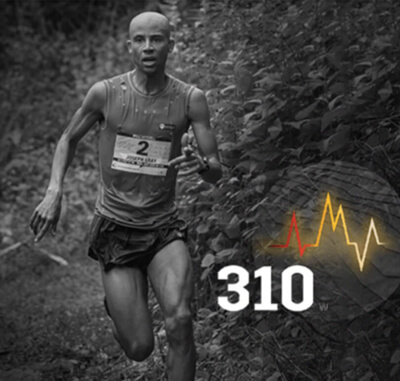
Aerobic/Muscular endurance
Aerobic endurance is critical for all endurance sports. This is the skill most closely related to career type. The muscular endurance requirement for a 5k runner is completely different from that of an ultramarathon runner. Generally speaking, muscular endurance is closely related to the stress built up from long runs and most long runs will fall into zones 1 and 2. There are many factors in determining aerobic endurance, for example the ability of the muscles to process lactate, capillary density, size of slow-twitch muscle fibers, etc. The exercises that are effective in promoting most of these factors are in zone 2 and in the higher range of zone 1. However, if you have a specific area to improve, the zoning becomes more specific. For example, if the purpose of training is to specifically improve the muscle’s ability to process lactate, training should be done in zone 3.
Anaerobic endurance
If your run requires anaerobic effort beyond your critical power, you should exercise in the higher zones, for example, zone 4 and the lower part of zone 5.
Muscular power
Muscle power is directly related to running economy (energy expenditure for a given speed). Improve the strength of your muscles, tendon stiffness, technique and coordination, to make the most of each step. In general, training in zone 5 will help you build muscle power, especially if you do it uphill.
Recovery
Recovery is best achieved in zone 1 for most athletes.
Chapter 3: Training with Power
In this chapter, we will introduce the general dynamics of power training.
Step 0: Prepare and allow the athlete to go out and run with power
Give the athlete a few days/weeks to get a feel for the correlation between power (watts) and specific paces.
Step 1: Determine the athlete’s critical power (CP)
Field tests:
Other methods to determine CP:
- Current time of 5k or 10k.
- Training.
- Athlete perception, RPE.
Step 2: Calculate the power zones
Now that you know your critical power, you can determine the power zones. If you’re using PowerCenter, enter your test results and we’ll automatically calculate the zones for you.
If you use TrainingPeaks, you can set your power zones directly in TrainingPeaks by following these instructions.
How do heart rate zones compare to power?
For zones based on the Karvonen formula, it is easy to do a 1 to 1 match with the Stryd power zones:
A simpler 5 zone system based on Karvonen’s formula for heart rate training, percentage is used in this equation:
*THR (Target Heart Rate)
TrainingPeaks uses lactate threshold heart rate (LTHR) and suggests 7 zones based on LTHR.
For zones based on the TrainingPeaks approach, we show in the following chart a possible mapping method based on our understanding, under the assumption that the LTHR can be mapped to Critical Power.
A more complete list of power zones can be found in the Palladino Power Project · Running Power Zones.
Zone comparison
Step 3: Keep critical power and zones updated
Perform a critical power test and recalculate the zones every 4-6 weeks throughout training to keep them up to date.
You can also monitor the level of exertion in certain power zones, so that over a period of weeks, if it’s easier to produce the same power, that’s probably a good indication that critical power has increased. Recent runs are also a good replacement for a critical power test to assess your progress.
As you engage in structured power-based training, improvements in fitness and efficiency can be detected through:
- Increase in critical power (compare test using power to weight ratio in watts/kg)
- Increase in power: HR
- Increase in power: form power
Good news, these are all the reasons you bought a power meter in the first place!
But that also means you have to continually monitor them as they improve over time, so you can keep training at a high enough intensity to cause adaptations, or make your “easy days” low enough to allow recovery.
Step 4: Follow a power-based training plan
To get started, you can incorporate power into your existing non-power training plan (for example, heart rate, pace, or RPE) as follows:
- Train with your existing heart rate/pace/RPE zone plan for at least one training cycle or phase, monitor your running power in each heart rate/pace/RPE zone throughout the workout.
- Get your personal power zones by entering running power numbers along with your heart rate/pace/RPE zones.
- Train with the power zones.
Chapter 4: Analyzing workouts and trends
Now that you have your STRYD power meter set up, critical power tested, and power zones set up, it’s time to start doing power-based training. This chapter will take you to the next level of understanding power and other related metrics.
We use the PowerCenter platform provided by STRYD to demonstrate how the analysis can be done. PowerCenter by far has some of the best support for power related data and running biomechanics data from Stryd. However, there are many software available in the market to help you analyze power related data, for example: TrainingPeaks, Final Surge, WKO4 and Golden Cheetah, feel free to choose the one that best suits your needs.
Analyzing individual workouts
Analyze an individual workout or race to gain an understanding of performance, fitness, and areas for improvement so you can structure your training more efficiently.
Here’s a quick introduction to some key metrics to watch:
Average power
Average or average power is the total of all the watts generated during a race divided by the amount of time of the race. You can set your watch to display your average power during your run or view this data afterwards in software like PowerCenter, TrainingPeaks, Final Surge, etc. Average power is a simple metric and therefore more informative for flat racing or race situations.
Normalized power (NP) is widely used in cycling, as one can have high variability in the power used during the ride. For example, on a bike you can go down a hill and produce 0 watts and then do short duration sprints later in the same ride. However, for running, you can’t go down a hill with 0 watts, as power is still required to run downhill, and running will not produce as much power as a bicycle. Therefore, normalized running power and average power will be very similar in most cases, and for simplicity only average power will be displayed in the STRYD PowerCenter. For those who still want to use NP for running, you can find this measurement on third-party platforms just like you would for cycling workouts.
Average power may not be informative during a workout that includes multiple intensity phases, such as an easy warm-up, recovery, high-intensity, and a cool-down segment. It would be better to evaluate the average power over each of these segments to assess the quality of training and compliance with the plan. Average running power will range from 100 to 500 watts for most athletes.
Form power
Form power is a measure of the amount of power that is produced to maintain the individual runner’s form, but does not apply to the metabolic cost of moving forward. Form power is equal to the power used to move your body vertically up and down, plus any wasted power used to move laterally (side to side). The lateral power component of form power is very small, so you will see a form power trend very close to your vertical swing. The decline in form power over time, when running at similar training speeds, is a good indicator that running economy has improved. Monitor the ratio of form power to total power over time to see trends in running efficiency.
Highly trained, inexpensive runners may already have near-optimal running form, but can monitor how power changes in form with fatigue. Form power for most athletes will range from 30 to 100 watts.
RSS (Running Stress Score)
RSS is a single number to help runners understand their training from day to day. It takes into account the volume and intensity of your training session to give you a single number, or “score”. The Running Stress Score is similar to the TSS (Training Stress Score) in that it allows you to compare the stress of workouts of various durations and intensities. The difference between TSS and RSS is small, the difference is due to the fact that the RSS equation is meant to account for the additional biomechanical stress placed on your body while cycling is largely an aerobic effort.
Here is how TSS is calculated compared to RSS:
The main RSS information is running power (collected every second) along with time spent at different training intensity levels and can be calculated as follows:
Where a and b are two constants developed by a sports physiologist. As mentioned above, PowerCenter does not use NPs, so the RSS is calculated for each second of the run and summed at the end to get a total RSS for the session.
Now that we have defined RSS, we can see how to monitor workload in terms of RSS over days, weeks, and months.
For example, if you did a workout on Tuesday that included a 10 minute warm up + a 20 minute tempo and cool down. You end the session, load the data into PowerCenter where you can see that the total RSS for the session was 89, a much higher RSS than Monday’s easy session.
Once you have a history of scores for each race, you’ll start to see patterns at the end of the week and you’ll be able to look back at your training and daily RSS, like in the graph and table below.
As seen by the relatively high RSS values, we can see that the quality training sessions were on Tuesday, Thursday and Sunday. If we add all the daily RSS values, we get a weekly workload of 402 RSS.
Stryd offers a breakdown of training intensity to help you understand your training, adapt and optimize it from day to day, week to week and training season.
Read more about how to monitor training load via Performance Management Graph (PMC) in WKO4.
Cadence
Cadence or stride rate is the number of steps a runner takes per minute (SPM) or the total number of ‘revolutions per minute’ (RPM). SPM takes into account the steps of both feet and is therefore twice the RPM.
Breakdown of power zones
Analyzing power zone distribution as a tool to monitor improvements and progression over time, as well as to determine how effectively the athlete followed the prescribed intensity for a single workout. The breakdown of power zones can also be used to show plateaus or improvements in training and efficiency.
Ground contact time
Ground contact time records how long your foot touches the ground in each stride. Most ground contact times are between 150 and 300 milliseconds. Elite runners are often under 200 milliseconds. Instead of consciously trying to focus on reducing your contact time while running, which could lead to injury, we recommend that you apply exercises, plyometrics, strength, and speed to your training and monitor this metric over time to see if there are improvements and changes in your running form.
Vertical oscillation
Vertical oscillation measures the amount of “bounce”, i.e. vertical up and down movement, generated while running. Similar to ground contact time, applying exercises, plyometrics, strength and speed to your training and monitoring this metric over time may be the best approach for analysis and tracking of improvements.
Leg spring stiffness (LSS)
Leg spring stiffness is a measure of how well a runner recycles energy applied to the ground. LSS has been shown to be correlated with running performance. Think of your leg as a spring that your body “bounces” on. The stiffer the spring, the less energy you have to produce to propel yourself forward with each step. This metric measures the stiffness of the leg muscles and tendons. Increases in the LSS may indicate an improvement in the economy over time. What is a “good” LSS value? The LSS is individual and cannot be easily compared between different runners and must be standardized for body weight in its own comparisons over time. For this reason, trends in LSS/kg for specific speeds should be the focus of the analysis. Dynamic mobility and biomechanical exercises, along with strength training and uphill repetition exercises, have been shown to improve leg stiffness and running economy.
That said, the LSS for most athletes is between 6 and 14 kN/M.
Additional studies and references to leg spring stiffness:
- Stryd White paper.
- Stryd Blog.
- Leg Spring Stiffness · Response to Plyometrics in Distance Runners?
- Leg Spring Stiffness and Hills.
- Leg Spring Stiffness and Running Surface.
- Leg Spring Stiffness and Static Stretching in Distance.
- RunnersA Simple Method for easuring Stiffness During Running.
Analyzing the race
Race pace is the most important racing strategy that can be planned and controlled. The rhythm not only controls how you spend your most valuable product – glycogen, but also decides the acidosis of the body.
If the goal is to pace consistently throughout the competition to achieve your personal best, pacing strategy is simple: set a power goal and stick to it. However, it is not always easy to follow a plan during a race.
For example, you might be passed by someone you really want to beat and have to pick up the pace to keep up, or you feel like you can “push” up the climb to leave some competitors behind. Unfortunately, these unnecessary jerks or increases in pace/intensity will waste glycogen and create additional acidosis. By repeatedly making pace changes, you’re likely to go slower overall than you would if you kept a steady pace. It goes without saying that the extreme variation in effort will use much more glycogen while increasing the acidity of the blood and this leads to a slow and painful finish.
Example:
If your goal is to get on the podium, then you are likely up for a variable pace race, and pace is critical here too. For this type of race your power will change significantly at all times, your power will largely depend on what others around you are doing and your endurance compared to your competitors. In some cases you can’t leave the pack and race on your own due to a psychological effect, so staying with the pack when it picks up speed and matching its intensity are critical to your final ranking. In these scenarios, the power will have a high variation. When it comes to the analysis for this race, what matters most is that if you can match the increase in intensity, and how it affects your run afterwards, with the ability to see the rapid pace changes in the race files, now you can train more specifically for the demands of your competition.
Check out this example of running analysis using power, by coach Steve Palladino.
Power trend analysis over time
Power duration profile & Power heatmap
Power and time are inversely related. The higher the power, the less time you can maintain it. Power versus duration is a great indicator of fitness and performance. So if you can increase your power for a given duration, you are fitter for that duration.
The power duration profile represents the athlete’s highest power for each duration. It is unique to you and changes as your fitness changes. It tells you the durations you are best at right now and the type of training you need to increase power for a given duration.
An example of a power duration profile is shown below:
The Y axis represents power in watts, the X axis is time. Note that the X-axis is not linear, as it places greater emphasis on the shorter durations, where the most changes are likely to occur. Sprinters, for example, will have a steeper incline with higher power output for shorter durations, while ultra-runners will likely see flatter corners than most. However, the shape of the power duration curve could be used to indicate areas where training is needed; for example, if strides or high-quality work are not included in training, the curve will appear flatter even if the main competition is a 5K or 10K.
With the power duration profile, you can create the fitness you need that is unique to the demands of your races, emphasizing training at the right intensity. Stryd provides a tool called Power Heatmap for this purpose.
It consists of a visual description of your running history in terms of intensity (power) and duration. The bright red “hot” zones indicate combinations of power and duration that are typically achieved in training. Dark blue areas occur less frequently.
The Training Power Heatmap has two main purposes:
- A time in zone comparison.
- The maximum power you have sustained in your training. The simple representation of your time in the zone allows you to quickly identify how you have been spending your time while training. It helps you quickly determine if you’ve been targeting the correct race intensities for your primary competition.
In addition, the power curve will always show the maximum power you have achieved in your training during that given time. Use this information to determine what you are capable of achieving in your next race!
Is your training effective?
Analyze the training to better understand how it was performed. Analyzing training over the course of a training block or season allows you to quantify improvements, adjust training load or intensity if necessary. Different athletes need different training strategies to improve different areas like pacing, climbing, anaerobic capacity, etc.
Effective training means watching for indicators of change in many areas. The following are some of the power indicators from training analysis over the course of a training season that serve as indicators that your training is paying off as you improve your fitness and get faster.
Changes in critical power (CP)
The most basic way to measure progress toward better fitness and speed in competition is to monitor changes in critical power. Ideally you will see positive changes throughout the entire training process.
Changes in power distribution
The change in training time you spend in each power zone is a direct indicator of training progress and an indirect indicator of overall improvement. During the base period, most athletes show the same distribution, however, once they reach race-specific training, the power distribution changes due to the different target races and the specific demand of each.
The distance and demands of the feature race will define the focus of training and the power distribution should change throughout the season to reflect this.
Changes in power profile
One of the best indicators of your readiness to perform well in a certain type of race is how much absolute power you can generate over periods of time that are predictive of the demands of your race. Tracking changes in your power profile is a great way to gauge race readiness, and you can do this by comparing your power profile from the current season to last season or any other time period. This could be a season-to-season or phase-to-phase comparison within a season. The options are endless and provide a great tool for measuring progress relative to another known time period.
Chapter 5: Racing with power
Plan the perfect race
There are several ways to determine target power for a specific race distance:
- Calculate your maximum sustainable power over the race distance based on your critical power (10k power for most). Below is a guide that Stryd has derived from our own internal results and through communication with Stryd users. Your own running distance power as a percentage of 10k power will be different depending on your resistance to fatigue.
Distance (km)% 10k power0.8128.51.61163109.44106.15103.81010021.194.642.289.9
- By analyzing the athlete’s training data, through the power-time heatmap, you can estimate your athlete’s maximum sustainable running power across different race distances and estimated times.
- Do you already have a target time in mind? Try using a third party calculator to estimate the average power you need to maintain to achieve a specific time for a given ride.
- Run your target race pace on similar terrain/elevation and use the power you produce at this pace to achieve your target race power.
Run a perfect run
Having a race plan is great, but executing said plan is where most runners typically fail. Download and use the Stryd PowerRace IQ APP to maintain a perfect execution of your race.
Set a goal that your athlete is forced to meet, allowing them to run at the right intensity throughout the race.

Chapter 6: Next steps

“From 5K to ultramarathon, a power meter can make you faster, but only if you know how to use it. It’s not enough to just look at your numbers; you can only become a faster, stronger, more efficient runner when you know what your key numbers mean to your goals.” workouts, races, and your training all season long. In Run with Power, TrainingBible trainer Jim Vance gives you the comprehensive guide you need to find the speed you want.”
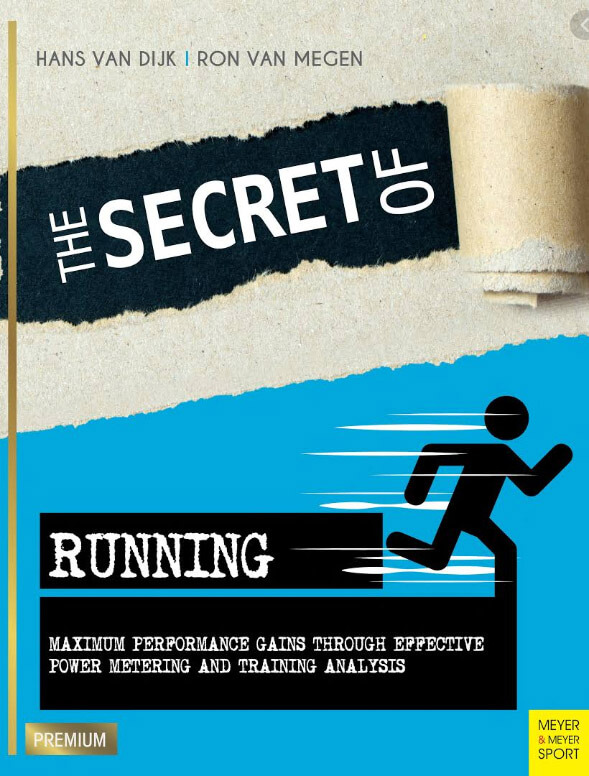
“How much power does your human engine have? How much power does it need to run in different conditions? How can you optimize your performance in training and competition? How can you use power meters to improve your results? What are the ultimate limits of the human performance? The Secret of Running answers all these questions. It shows how power meters can be used to optimize training, economy and race outcome.”

Stryd has been evaluated, used and tested by trainers around the world in recent years. We have created the Power Training Group for those coaches who are actively using Stryd with their athletes.
If you are a coach interested in partnering with us, you can learn more by clicking here.
Appendix
Examples of power-based workouts
Additional metrics, tools and links
Once you’re comfortable with power-based training and have collected enough baseline data to make comparisons, you can begin to reap the additional benefits of power running.
- Monitor changes in efficiency:
- Tools to analyze power files
Another resources
- Explore the Stryd Support page for troubleshooting help.
- Read the Stryd Blog to learn about the most useful features of Stryd.
- Join the Stryd Facebook community to learn from Stryd experts.
- Learn from Stryd Improve in the PowerCenter to guide your training.

